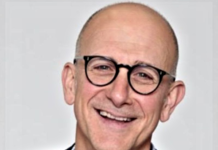
(By Bob McCurdy) In marketing, there’s something known as the “Law of Large Numbers” which plays to one of radio’s major strengths — reach.
The concept behind Large Numbers is that when it comes to generating advertising results, it helps to make sure as many prospects as possible — i.e. the “long tail” — know about the offer. It plays to Erwin Ephron’s “recency” planning philosophy which states it’s better to reach many, than preach to a few.
There are many things in marketing we could debate, but one thing that’s not debatable is that a consumer can only take advantage of an offer or sale if they are aware of it. This “law” came to mind last week while discussing an opportunity with a Philadelphia account executive. This AE’s client’s intention was to utilize Pandora exclusively to promote a key sales event.
Our contention was that to make the sale as successful as possible, AM/FM radio should also be utilized, stressing that the market data simply didn’t support the exclusive use of an audio platform with limited reach.
We kept the math simple.
There are 4,187,249 people A18+ in the Philadelphia MSA, of which, according to Scarborough, 836,575 or 19.9% tune to Pandora weekly. AM/FM’s weekly reach figure, according to Nielsen, is 3,826,500 or 91.3% of all A18+.
I then applied the Law of Large Numbers concept to these figures to further make my case.
For the following comparison these assumptions were put forth:
— The commercial responsiveness of the Pandora listener and the AM/FM radio listener is approximately the same.
— Pandora and AM/FM radio’s ability to reach their respective listener bases is approximately the same.
— AM/FM and Pandora are priced similarly in terms of CPM or CPP.
— They both air the same creative.
We continued the arithmetic with a hypothetical schedule on Pandora and AM/FM that reached 20% of their respective weekly listeners, which resulted in 1% of those exposed to respond.
Based on Pandora’s weekly Philadelphia listenership, this equates to 1,673 consumers responding to the Pandora commercial (836,575 x.20 x.01). Based on AM/FM’s weekly Philadelphia listenership, this equates to 7,653 consumers responding to the AM/FM commercial (3,826,500 x .20 x .01), or 4.6x more customers than the Pandora campaign.
This means that Pandora’s commercials would need to be 4.6x more effective than AM/FM’s to generate the same number of customers as the AM/FM campaign. To state that this is highly unlikely is a massive understatement.
Doing the math for several other markets shows that in Boston there’s a 5.1x advantage for AM/FM, a 4.8x advantage in Charlotte, a 5.2x advantage in Detroit, a 4.2x advantage in Las Vegas, a 4.9x advantage in Tampa, and a 6.1x advantage in Ft. Myers.
When doing this same exercise with Spotify the AM/FM advantage is considerably greater.
We were also able to highlight to this advertiser via Scarborough data, that the Pandora listener in Philadelphia was +6% more likely to be among the heaviest of AM/FM listeners (P1), +11% more likely to be heavy AM/FM listeners (P2), and -33% less likely to be amongst the lightest listeners to AM/FM (P5).
Based on this data one could easily make the case that an AM/FM radio campaign would likely reach the Pandora listener by not even using Pandora.
In summary:
— The dramatically increased response rates required by lower reach Pandora campaigns to generate the same results of the larger reach AM/FM campaigns are impractical to ever expect.
— In Philadelphia, the Pandora listener is also the heavy AM/FM listener.
— If the goal is to sell product with audio in Philadelphia, AM/FM is the vehicle to utilize.
The above is based upon reasonable top-line assumptions and math utilizing specific market usage data and is, at an absolute minimum, directionally correct in terms of its conclusion. It is easy to replicate and understand and makes our case.
All audio advertising is effective and clearly a terrific way to promote a product, service or sale, but in 2018, online audio should remain a “supplement to,” not a “substitute for,” AM/FM radio.
This advertiser ultimately agreed.
Bob McCurdy is The Vice President of Sales for The Beasley Media Group and can be reached at [email protected]






Creative aside. What is the cost to air on Pandora vs. reaching the 91.3% of all A18+. There are a lot of assumptions above. Cost effectively reaching 3,826,500 of Philadelphia’s radio audience with enough frequency to generate a 1% response is questionable.
Radio continues to toss out this “91%” (or 92%-93%) Reach number depending on who’s asked. That’s a remarkable reach number, it really is. But unless you can afford to advertise on every station in town, and heavily, this is a useless stat that means nothing to clients. Let’s start this project over. What’s the client’s budget? Now let’s see how many appropriate stations the advertiser can actually afford. Now what’s the Reach %? That’s the number that should be compared. It would actually be accurate, and might even tell a similar story. But when we sell it this way, repeating the same old numbers over and over again, the story sounds old.
Your math is terrific – but Creative is Everything. How are you addressing that ?????
I should have added that even as Bob makes exceptionally valid points about radio’s spectacular reach, that knowledge demonstrates radio’s stock status quo.
It is still up to radio to do much, much better than to fly the “reach flag”.
Attracting and holding greater audience number while producing more listenable and influential ads is still not being addressed.
Those are the elements that are key to radio rising above the unenviable state it, nevertheless, finds itself.
In the presented examples, Bob mentions: “They both air the same creative.”
While that does level the field somewhat, the source or the quality of the creative is not supplied.
(It may not be a required element to demonstrate the example, either.)
Even so, will the facts of radio’s reach, as well as the positive, audience responses, become another portion of a litany of radio’s “sad and unnecessary ironies” as part of a future discourse, or even some autopsies?